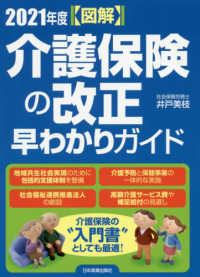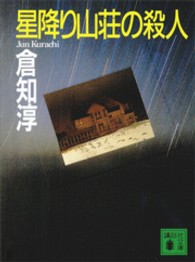- ホーム
- > 洋書
- > 英文書
- > Science / Mathematics
Full Description
Geomicrobiology of Río Tinto: A Terrestrial Mars Analogue provides the most detailed biological and geological characterizations of one of Earth's best terrestrial Mars analogues. The acidic waters of Río Tinto and the high metal content of its sediments have given rise to a unique biodiversity. Understanding the geochemical and mineralogical conditions that have shaped the evolution of these extremophiles is essential to guiding the selection of sites for meaningful missions to Mars. Edited by a renowned astrobiologist with contributions from global experts with applied experience in Mars exploration missions, this book is systematically structured for a wide audience. Sections delve into the physical characteristics and biological diversity of Río Tinto, its suitability as a terrestrial Mars analogue, and the fundamentals and applications of geomicrobiology. Geomicrobiology of Río Tinto: A Terrestrial Mars Analogue provides its interdisciplinary audiences with the fundamentals to understand the paleontological record of the system, the diversity existing in its water column, the biological activities responsible for its extreme conditions, and their biotechnological applications and relevance to future exploration missions to the red planet. This is an essential read for astrobiologists, aquatic biologists, geomicrobiologists, paleontologists, and biotechnologists alike.
Contents
Section I: Geology, Hydrology, and Paleontology
1. The geological framework of the Río Tinto: The largest accumulation of sulfides in the Earth crust
2. Sedimentology and geobiology of Río Tinto
3. Hydrogeological and hydrogeochemical characteristics of the source of the Río Tinto
4. Paleontology of Río Tinto
Section II. Microbial and Eukaryotic Diversity
5. Prokaryotic diversity along the Río Tinto
6. Microbial biodiversity in the anoxic sediments of Río Tinto
7. Acidophilic cyanobacteria in the Tinto basin
8. Cyanobacteria in the deep subsurface of the Iberian Pyrite Belt
9. Eukaryotic diversity along the Tinto basin
10. Fungal diversity in the Tinto basin
11. Vegetation associated to an extreme acidic river with high metal content, Río Tinto
12. Río Tinto virology
Section III. Río Tinto as a Mars Terrestrial Analogue
13. Mineralogical and geochemical characterization of Río Tinto using combined spectroscopic methods: implications for exploration of Mars
14. Methanogenesis in a Mars terrestrial analogue
15. From Río Tinto to Mars: Investigating potential microbial metabolisms and their signatures
16. Technology developments for the characterization of the deep subsurface of the Iberian Pyrite Belt and Mars
Section IV. Geomicrobiology: Fundamentals and Applications
17. Origin of Río Tinto, anaerobic oxidation of iron in the deep subsurface of the Iberian Pyrite Belt
18. Biogeochemical cycles operating in the deep subsurface of the Iberian Pyrite Belt
19. Retrotranscriptomic analysis of the Tinto basin to understand polyextremicity
20. Biotechnological applications of the biodiversity existing in the Tinto basin
21. Vitamin B12 in the deep subsurface of the Iberian Pyrite Belt







